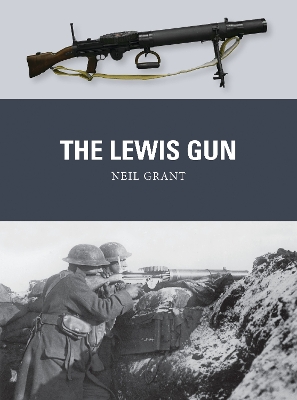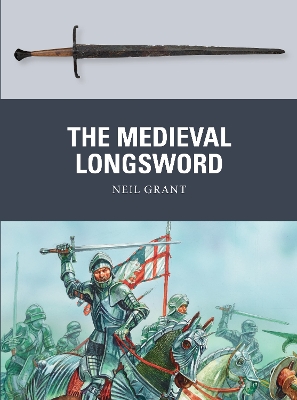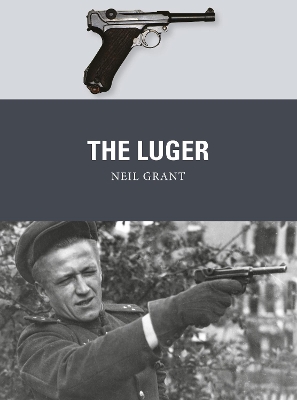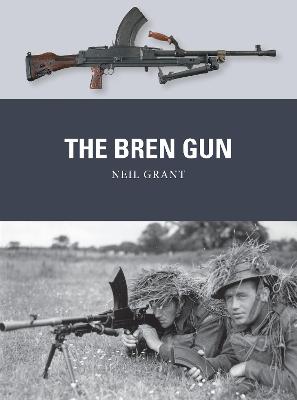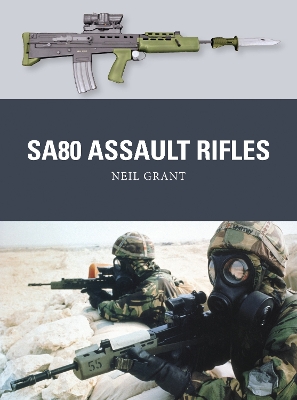Weapon
4 primary works • 6 total works
Book 34
During World War I, the British adopted the US-designed Lewis gun as an infantry weapon, realizing that its light weight and the fact that it could be fired both prone and on the move made it ideal for supporting advances and defending captured trenches. Later adopted by an array of countries from the Netherlands to Japan, the Lewis successfully served as the primary or secondary armament in armoured fighting vehicles and in both ground-based anti-aircraft and aircraft-mounted roles. Although it was superseded by the Bren in British service in 1937, the outbreak of World War II meant that thousands returned to active service, and it played a key role as far afield as Libya, with the Long-Range Desert Group, and the Philippines, with the US Marine Corps. Written by an authority on this iconic light machine gun, this is the fascinating story of the innovative and influential Lewis gun, from the trenches of World War I to the Libyan desert and Pacific islands of World War II and beyond.
Book 39
This volume offers an insight into the iconic Mauser family of German bolt-action rifles. Drawing on first-hand accounts of the weapons in combat and primary sources regarding their mechanical performance, this fully illustrated study charts the Mauser's origins, combat record and lasting influence. It explores the full range of Mauser rifles, beginning with the hugely successful Gew 98, which entered service in the time of the Kaiser, provided the basis for the US Springfield M1903 and equipped combatants such as the South African Boers. It also investigates the Kar 98k, which was still in front-line use with Wehrmacht troops in 1945, saw use with Mexican and Yugoslavian forces, and even played a role in the 1990s Balkan conflicts in the hands of snipers. Featuring expert analysis, specially commissioned artwork and gripping first-hand accounts, this volume is ideal for anyone seeking an understanding of these sturdy and accurate rifles' unique place in the history of small-unit tactics in the 20th century.
Book 48
The formidable European longsword - featuring a double-edged straight blade in excess of 40in, and capable of being used with one or both hands - remains one of the most impressive and distinctive edged weapons of the late medieval era. Also known as the 'bastard' sword and the 'hand-and-a-half' sword, the longsword evolved from the war swords and great swords of the 14th century, and emerged as a battlefield weapon in the early stages of the Hundred Years' War. It went on to become a key weapon on the battlefields of late medieval Europe, creating a new system of sword fighting.
Drawing together period sources, modern technical analysis and his own experiences with the longsword, Neil Grant explores the origins, manufacture and evolving use of this iconic late-medieval edged weapon. Illustrated throughout with specially commissioned full-colour artwork and an array of period illustrations and close-up photographs, this is the enthralling story of one of late-medieval Europe's most distinctive and deadly close-combat weapons.
Drawing together period sources, modern technical analysis and his own experiences with the longsword, Neil Grant explores the origins, manufacture and evolving use of this iconic late-medieval edged weapon. Illustrated throughout with specially commissioned full-colour artwork and an array of period illustrations and close-up photographs, this is the enthralling story of one of late-medieval Europe's most distinctive and deadly close-combat weapons.
Book 64
Patented in 1898 and produced from 1900, Georg Luger’s iconic semi-automatic pistol became synonymous with Germany’s armed forces throughout both world wars.
Initially chambered for the 7.65×21mm round, from 1902 the Luger was designed for DWM’s 9×19mm round, which even today remains the most popular military handgun cartridge. It was adopted by the Imperial German Navy in 1904, followed by the German Army in 1908, receiving the name Pistole 08. Despite being supplanted by the Walther P38, the Luger remained in widespread service with all arms of Nazi Germany’s armed forces throughout World War II, and even equipped East Germany’s Volkpolizei in the years after 1945.
Featuring full-colour artwork, expert analysis and archive and present-day photographs, this engaging study tells the story of the Luger, the distinctive and deadly semi-automatic pistol that has come to symbolize Germany’s armed forces in the 20th century.
Initially chambered for the 7.65×21mm round, from 1902 the Luger was designed for DWM’s 9×19mm round, which even today remains the most popular military handgun cartridge. It was adopted by the Imperial German Navy in 1904, followed by the German Army in 1908, receiving the name Pistole 08. Despite being supplanted by the Walther P38, the Luger remained in widespread service with all arms of Nazi Germany’s armed forces throughout World War II, and even equipped East Germany’s Volkpolizei in the years after 1945.
Featuring full-colour artwork, expert analysis and archive and present-day photographs, this engaging study tells the story of the Luger, the distinctive and deadly semi-automatic pistol that has come to symbolize Germany’s armed forces in the 20th century.
Adopted in 1938 and remaining in British service until 1991, the popular and reliable Bren was an iconic light machine gun, and arguably the most recognizable Commonwealth weapon of World War ll. Gas-operated and magazine-fed, it was based on a Czech design and was issued in large numbers during and after World War ll, as a section-level automatic weapon. Offering remarkable accuracy for an LMG, the Bren had an effective range of 600 yards, but could reach out to over 1,500 yards. It was generally fired from the prone position using a bipod, but could be fired from the hip when necessary. If kept clean, the Bren gave a reliable service in the harshest of environments, from the deserts of Libya to the Korean mountains in winter. As well as widespread infantry use, the Bren was widely supplied to resistance movements in Occupied Europe. Featuring specially commissioned full-colour artwork and based on meticulous research, this is an engaging story of the iconic light machine gun that equipped British and Commonwealth forces throughout World War II and in a host of postwar conflicts, right up to the Falklands and beyond.
Now the standard weapon for British soldiers across the globe, the SA80's early years were surrounded in controversy after a series of dismal performances. It was prone to jamming in desert conditions, had several flimsy parts that would often break after repeated use and had an incredibly sensitive magazine catch. When these issues came to light the SA80 was lambasted by the news, leading to the Ministry of Defence ordering an extensive modification programme that dramatically improved reliability.
Combat accounts and in-depth analysis of the SA80's performance in Kosovo, Sierra Leone, Afghanistan and Iraq guide the reader through its troubled life, while vivid artwork helps to illustrate the transformation it underwent; from an unreliable rifle disliked by the soldiers who used it to being one of the world's most innovative and accurate small arms.
Combat accounts and in-depth analysis of the SA80's performance in Kosovo, Sierra Leone, Afghanistan and Iraq guide the reader through its troubled life, while vivid artwork helps to illustrate the transformation it underwent; from an unreliable rifle disliked by the soldiers who used it to being one of the world's most innovative and accurate small arms.
